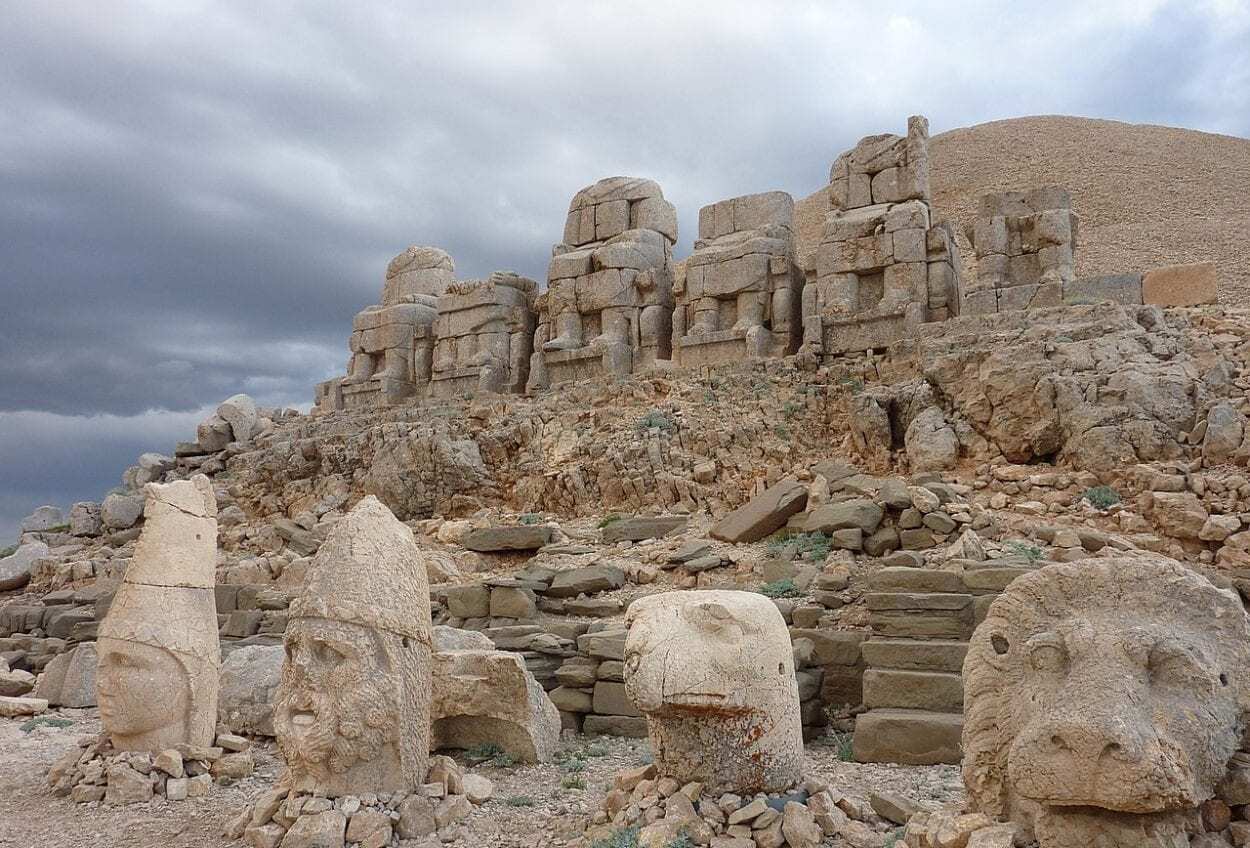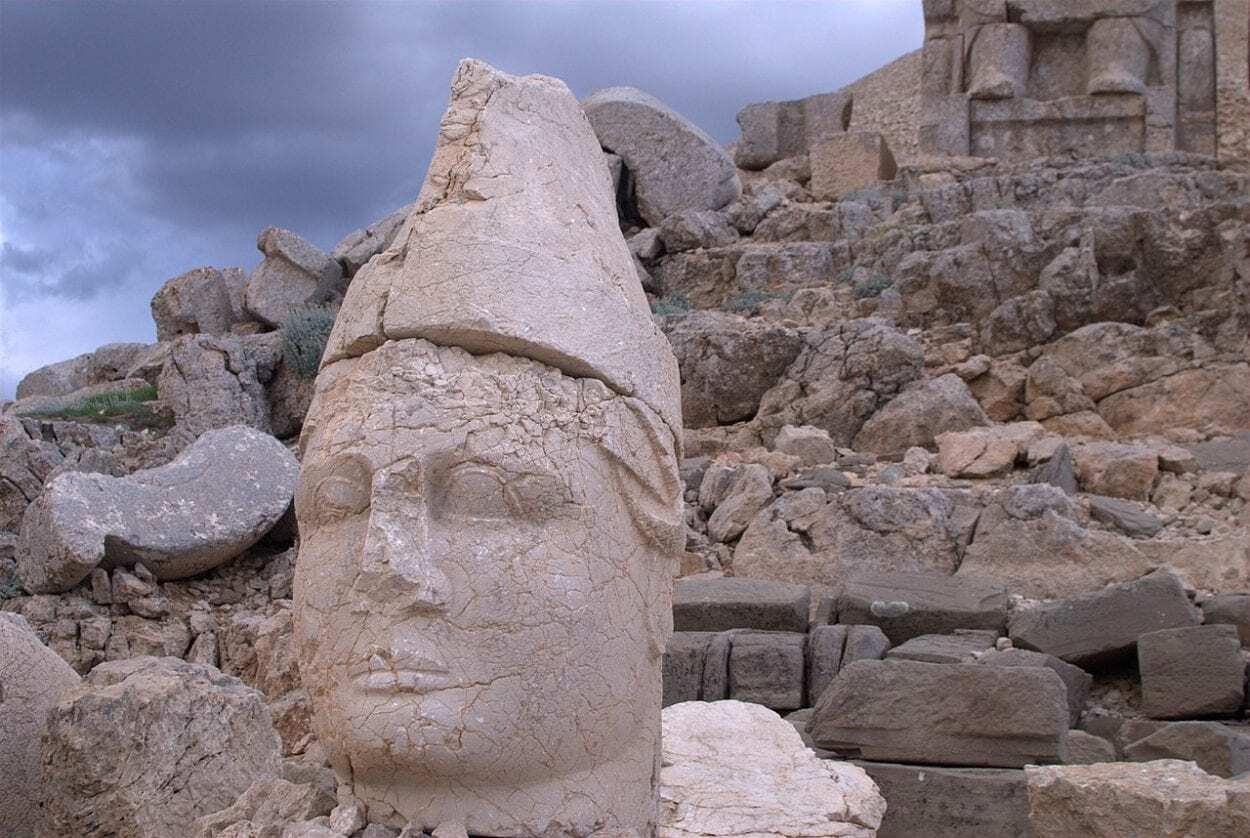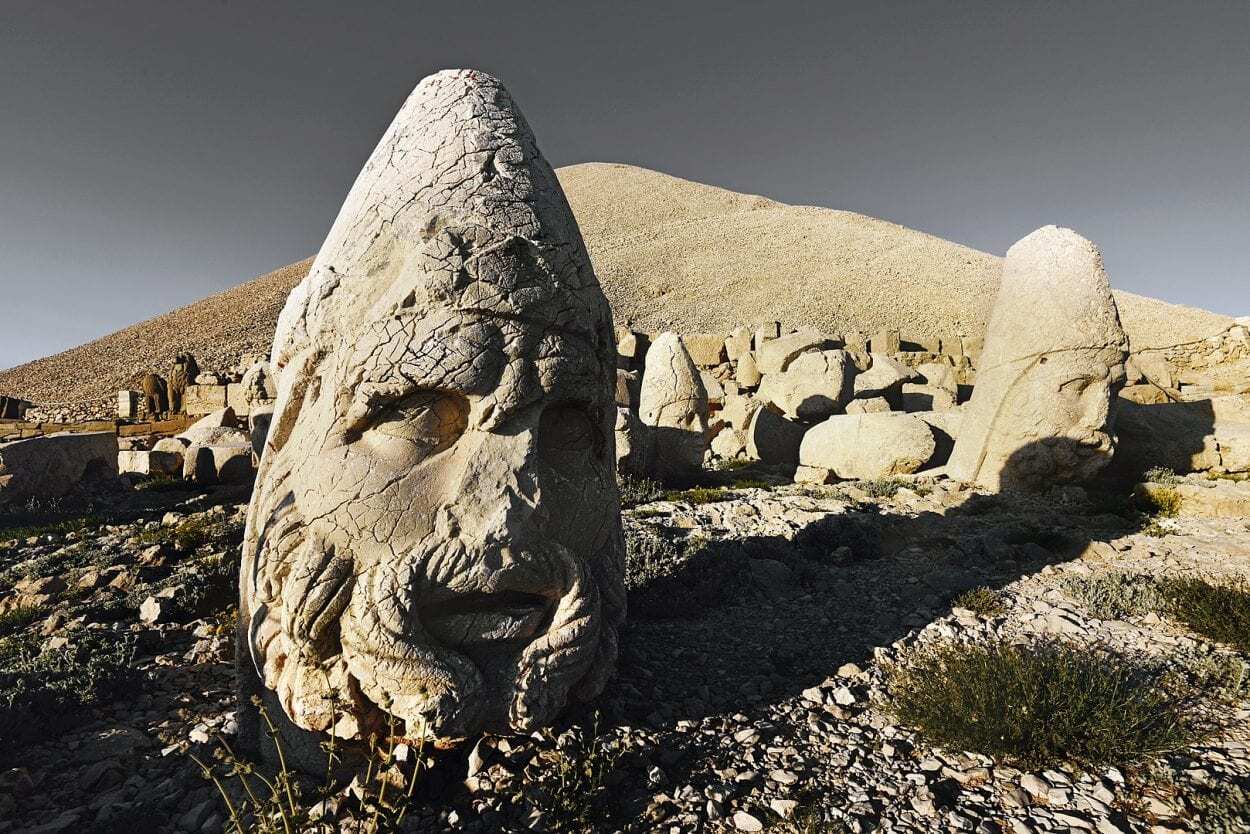Nemrut is a mountain in the Taurus Mountain range that separates the Mediterranean coastal region from the central Anatolian Plateau in southern Turkey.
In 62 BC, King Antiochus I Theos of Commagene constructed a tomb-sanctuary on the summit of the mountain, at an elevation of 2,134 metres.
Antiochus I Theos of Commagene was the King of the Greco-Iranian Kingdom of Commagene (a successor state of the Seleucid Empire) whose rulers were a Hellenised branch of the Iranian Orontid dynasty.
The Commagene Kingdom occupied the land between the Taurus mountains and the Euphrates, centred on the ancient city of Samosata, and served as a buffer state between Armenia, Parthia, Syria, and Rome.

During his reign, Antiochus created his own cult to be worshiped after his death in a Greek form fused with Zoroastrianism. In an inscription, he decreed that his tomb would be constructed in a remote place close to the gods, with him being deified and worshipped among their ranks.
The tomb sanctuary reflects the mixed cult beliefs, with huge statues arranged in a hierothesion of Antiochus, lions, eagles, and various Greek, Armenian, and Iranians deities, such as Heracles-Artagnes-Ares, Zeus-Oromasdes, and Apollo-Mithras-Helios-Hermes. At some point in history, the heads of the statues were removed (possibly because of iconoclasm) and scattered throughout the site.
The site effigies also display a fusion of Greek and Persian influences, with the clothing portrayed in a Persian iconographic style, whilst the physical features suggest a Greek artistic style.

The sanctuary also consists of a 49-metre tall tumulus and two ceremonial terraces. The western terrace depicts a lion, showing an arrangement of stars and the planets Jupiter, Mercury, and Mars – suggesting an astrological calendrical representation for ceremonies owing to an astronomical or religious nature.
The sanctuary was forgotten for centuries until excavations in the late 19th century by German archaeologists revealed that the site was a royal tomb for Antiochus, based on inscriptions discovered throughout the site.
To date, subsequent excavations have failed to find Antiochus’s burial chamber.
Header Image Credit : CC BY-SA 4.0





